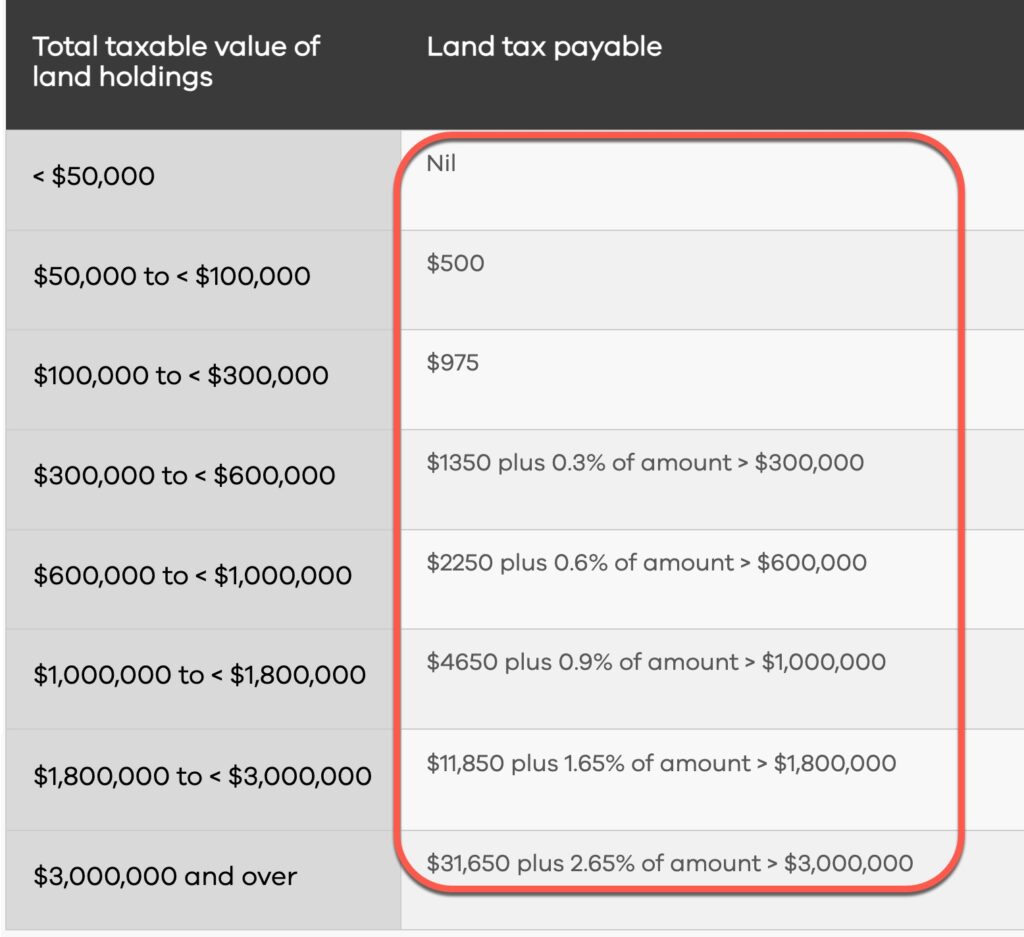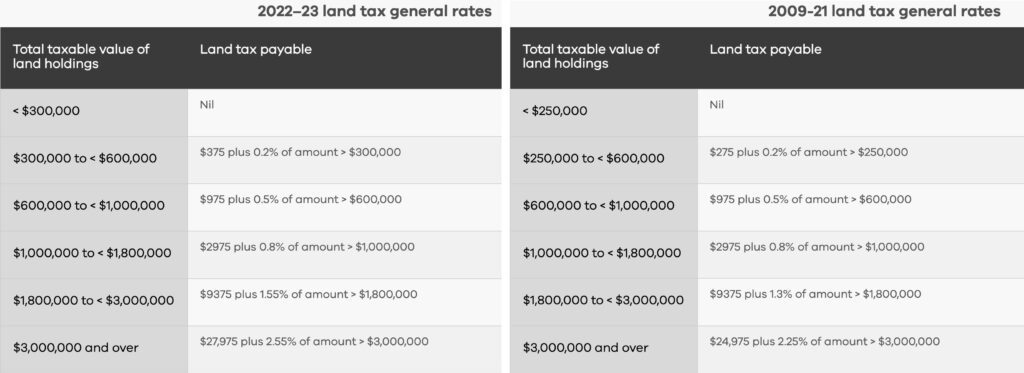Investors loathe it and many prospective buyers are reconsidering because of it, but what are the Victorian land tax changes? And where can we head to better understand the changes?
Eight months ago, I penned this article addressing the tax changes. These changes are now rolling out, and it is important that investors understand what this means for them.
We have had multiple changes to our land tax rates in Victoria in recent years. Our new rates, (which include the COVID temporary tax) are highlighted in red. Past years are below, labelled accordingly.


It is important to note that the schedules above only shows general land tax rates. These rates apply to owners who have purchased their investment property in their own name, as opposed to a trust or company structure. Trusts are assessed with a different land tax surcharge.
In addition, an ‘absentee’ owner will have a surcharge applied. “The AOS (Absentee Owner Surcharge) is a surcharge rate that applies to land that that is owned by an absentee person, absentee corporation, or absentee trust. These terms are broadly defined and aimed at imposing a surcharge on foreign interests (e.g foreign corporations, foreign trusts and foreign individuals).” (Source: Grant Thornton)
To illustrate the impact of the changes for investors holding land in Victoria, I’ve worked on five examples, contrasting their land tax bill from 2023 calendar year to 2024 calendar year.

Sam owns a regional investment property (unit) in Mildura with a taxable land value of $180,000. Last year Sam paid no land tax, but this year her land tax bill will be $975.
Lucy rents out a large Edwardian house on a nice allotment of land in Prahran. It’s taxable land value is $2M. Last year, Lucy’s land tax surcharge was $12,475. This year, it will be $15,150.
Bill owns four house across Melbourne and the combined taxable land value is $3.5M. Last year, Bill paid $40,725 to the SRO in land tax. This year, his payment will be $44,900.
Kylie owns four properties with a total taxable land value of $2M. However, Kylie purchased all of her properties within her family trust. Last year, Kylie’s land tax surcharge was $17,861. This year it will be $20,577.
Ed lives overseas, works overseas, and is not an Australian resident. He owns two properties in Victoria that have taxable land values of $2M combined. Last year, Ed paid $52,475 in land tax to the SRO. This year, his land tax bill will be $95,150.
That’s equivalent to a professional salary!
So, what changes can we expect to see in our Victorian property market?
I believe that absentee investors will question the viability of their investments. There are other states (and countries) with far more appealing land tax rates. I also think that property investors with sizeable portfolios will consider selling and reinvesting into shares. Currently there are no taxes outside of capital gains and income tax (on dividends) applied to shareholders.
Lower threshold property owners will likely hold, as the tax apportioned to properties with land values under $300,000 are not as harsh.
It is also important to note that land tax is a deductible expense against federal income tax.
Resources:
https://www.sro.vic.gov.au/rates-taxes-duties-and-levies/land-tax-current-rates
REGISTER TO OUR NEWSLETTER
INFORMATION
CONTACT US
1A/58 ANDERSON STREET,
YARRAVILLE VIC 3013
0422 638 362
03 7000 6026
CATE@CATEBAKOS.COM.AU
